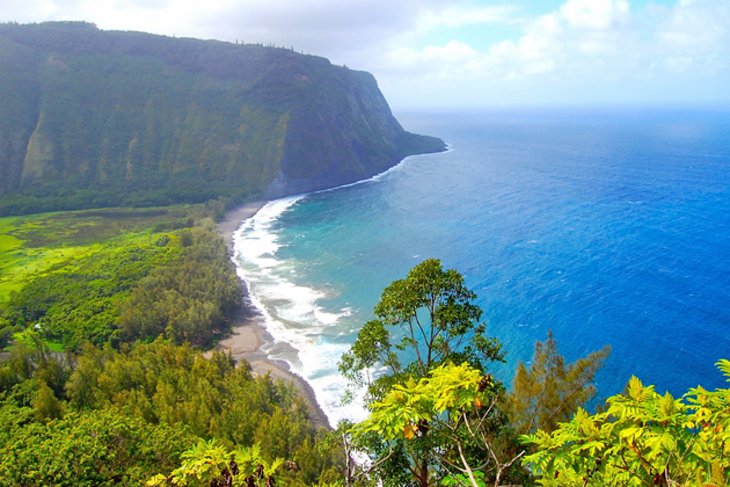The Big Island of Hawaii beckons with volcanic wonder, lush rainforests, and an irresistible blend of Polynesian culture and laid-back island charm. But even paradise has its off-seasons, and venturing to the Big Island during the wrong time can turn your dream vacation into a less-than-ideal experience. So, before you book your flights and pack your snorkel, let’s shed light on the worst times to visit Big Island Hawaii.
1. Holiday Hype: December and Early January
Picture this: crowded beaches, sky-high prices, and booking wars for coveted sunset cruises. Welcome to the reality of Big Island in December and early January. The festive cheer certainly has its allure, but the island experiences a massive influx of tourists during the holidays, driving up costs and making everything from rental cars to restaurant reservations scarce. Additionally, the weather during this time can be unpredictable, with frequent rain showers and even colder temperatures compared to other months.
2. Hurricane Season: June to November
While the chances of encountering a direct hurricane hit on the Big Island are relatively low, it’s crucial to be aware of the potential disruption during hurricane season, which officially runs from June to November. The increased rainfall and choppy ocean conditions can impact outdoor activities like snorkeling and boat tours, and the constant uncertainty can dampen the vacation vibe. If visiting during this period is unavoidable, consider staying on the drier Kona side of the island and prioritize flexible travel plans.
3. Spring Showers: March to May
Although technically considered shoulder season, spring can be a mixed bag on the Big Island. While crowds are smaller and prices more reasonable, it’s also the wettest time of year. The windward side of the island, home to lush rainforests and waterfalls, gets particularly drenched, and even the leeward Kona coast can experience frequent downpours. However, for travelers who don’t mind a little rain and appreciate the vibrant greenery, spring can offer a unique and budget-friendly option.
4. Shoulder Season Blues: April and May, September and October
While shoulder seasons often promise a sweet spot between crowds and costs, on the Big Island, April and May, and September and October can be somewhat awkward times to visit. The weather is transitioning between wetter and drier periods, making it difficult to predict sunshine and rainfall. Additionally, some tours and activities may operate on limited schedules due to the lower tourist numbers.
Beyond the Calendar: Additional Factors to Consider
Now that we’ve covered the worst times based on the calendar, let’s delve into some additional factors that might influence your Big Island experience:
- Events and Festivals: Major events like the Ironman World Championship or the Merrie Monarch Festival can lead to increased crowds and accommodation shortages. Plan your trip around these events if you’re interested in attending, but book well in advance.
- School Holidays: Big Island becomes a popular family destination during American school holidays, particularly around spring break and summer. Expect higher prices and larger crowds, especially at family-friendly attractions.
- Whale Watching: Peak whale watching season on the Big Island is between November and May. While this can be an incredible experience, it’s also a prime tourist draw, potentially impacting prices and availability.
Planning Your Perfect Big Island Getaway
So, when is the best time to visit the Big Island? Honestly, it depends on your priorities and preferences. Generally, May to September offers the best combination of good weather, moderate crowds, and reasonable prices. But if you’re flexible and willing to consider factors like events and personal preferences, you can find your own slice of paradise on the Big Island any time of year.
Transportation Tips:
- Flights: Book your flights early, especially during peak season. Consider flying into Kona International Airport (KOA) for the leeward side or Hilo International Airport (ITO) for the windward side.
- Rental Cars: Reserve your rental car in advance, as availability can be limited during busy periods.
Accommodation Options:
- Hotels and Resorts: Choose from luxurious beachfront resorts on the Kona Coast or charming eco-lodges in the Volcanoes National Park.
- Vacation Rentals: Consider private vacation rentals for a more intimate and spacious experience.
- Camping: For adventurous travelers, camping offers a budget-friendly way to immerse themselves in the Big Island’s natural beauty.
Embrace the Aloha Spirit:
No matter when you choose to visit, remember to embrace the “Aloha Spirit” of hospitality and respect for the land and its culture. Learn a few basic Hawaiian phrases, support local businesses, and leave no trace behind. With a little planning and an open mind, your Big Island adventure can be unforgettable, even if you avoid the worst times to visit.
